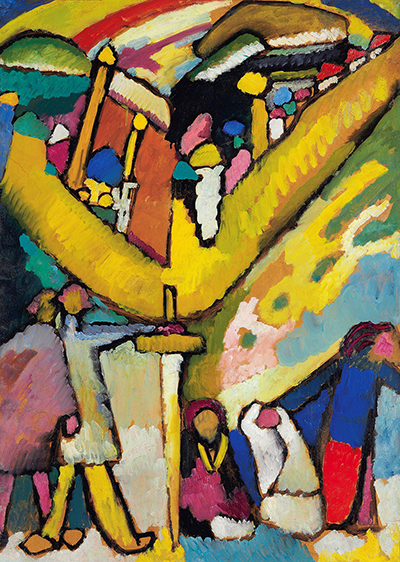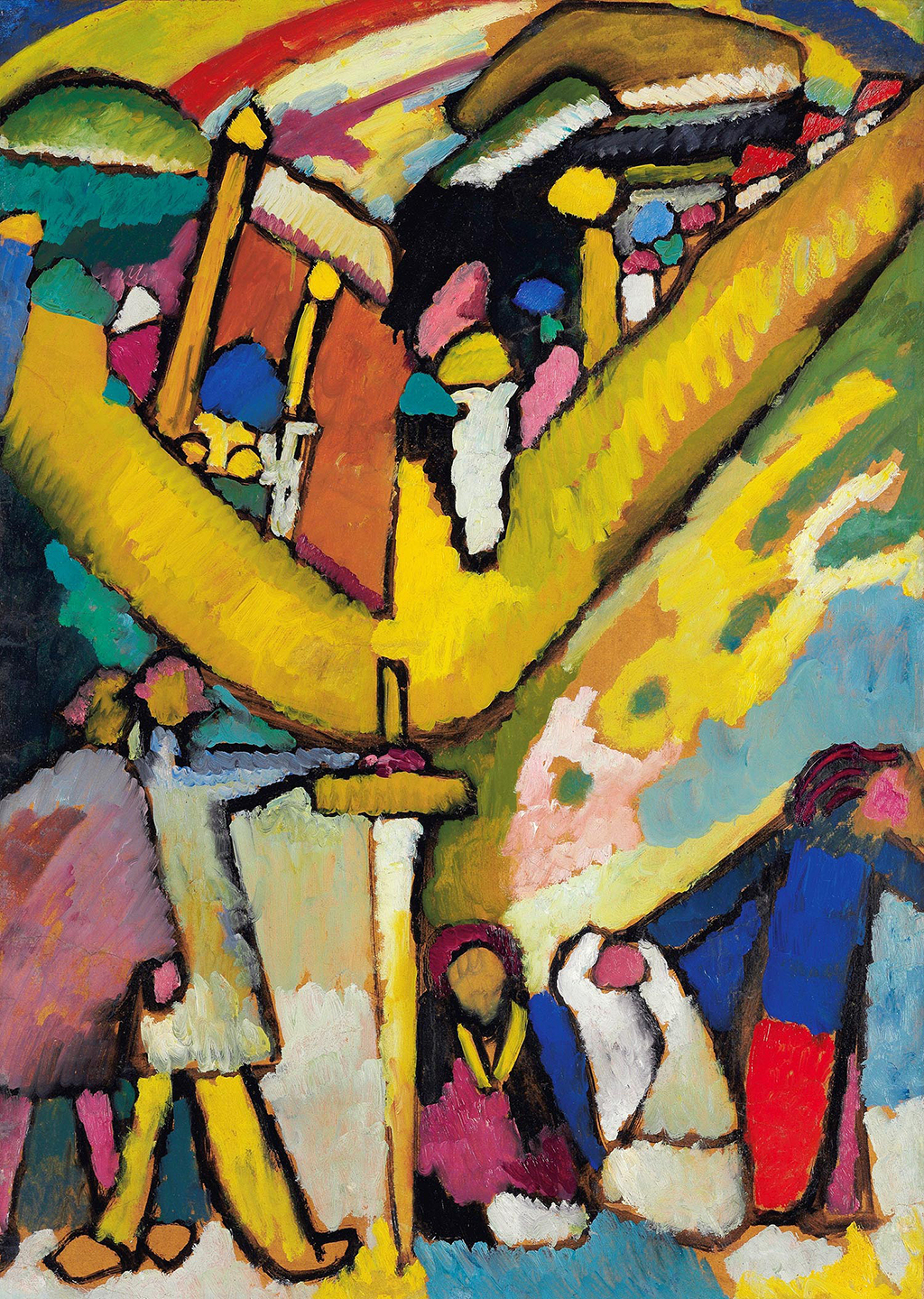Wassily Kandinsky produced a large number of related iterations upon the theme of improvisations, and as can be found with the artwork in front of us here, he also worked on a number of study pieces in preparation for them.
The style found here is entirely different to the geometric arrangements that most remember his career for. We find a good connection to reality, with recognisable features such as multiple figures in the bottom of the canvas. He liked landscape art at this time and many of his improvisations would feature rolling hills with the occasional building dotted about. He was clearly contemporary in approach at this point, but still a far way away from the truly abstract forms that appeared later on, by which point he was consciously attempting to entirely reject the human world and avoid any connection to it whatsoever. By that point he was already successful and also was working as a mentor to younger artists. He became heavily involved in various theoretical themes surrounding the world of art, such as in the application of colour combinations that was always a key part of his work.
Here we find bright tones of yellow that dominate with a v-shaped expanse of colour. Besides this are tones of pink, blue, green and red. To see the piece in person would allow these colours to leap from the wall and it reminds us as to why so many of the public actually prefer this period of his career. He would go on to make a large number in this improvisation group of work and is forms an important part of his artistic development which occurred through the continual experimentation of form and colour. He would then inspire many others who followed and also helped in raising the profile of German art in the early 20th century, despite being Russian himself. He remains another artist to have come from Russia to the west and left behind a huge impact that remains deeply felt even today.
Such is the vividity of the colours in this painting that being able to recognise specific details is almost irrelevant to the enjoyment of it. One could even crop a section of it as an art print and it would still work well in lifting your home with an abundance of deep colour. The artist went on a long journey through his career which ultimately led him to a course of high abstraction, but along the way many other exciting styles and techniques were used, most of them successfully. He also made many painted studies such as this, as well as a number of drawing studies that could be completed much faster and the two together were a part of the overall process towards achieving the final, complex oil paintings.





